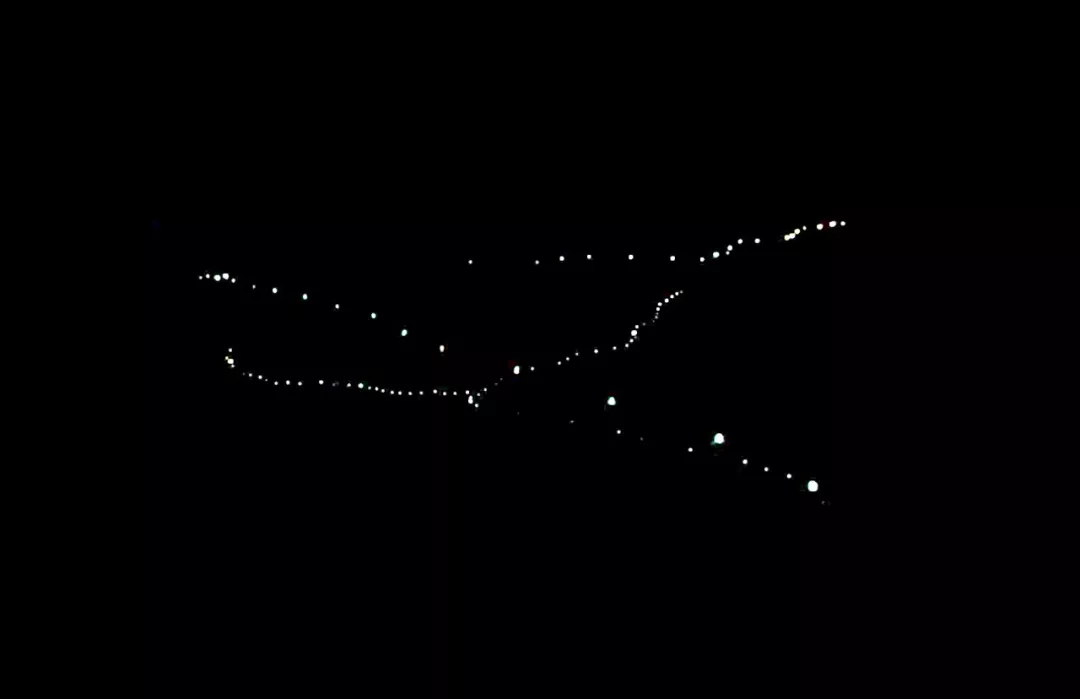
《迁徙之河》大型室外装置,2010年纪录片影像 。图片来源:怡画廊
艺术和设计联展《似绿非绿》现正在纽约怡画廊举办,参展艺术家包括安妮·卡特琳·森斯塔(Anne Katrine Senstad)、 卢思洁 (Si Jie Loo)、 詹米·马丁内斯 (Jamie Martinez)和罗斯加德工作室(Studio Roosegaarde)。此次跨学科展览并非只向观众描绘一幅令人焦虑的“世界末日”黑暗场景,参展的作品题材也超越了用废旧材料制作的“绿色环保”艺术,其侧重点是艺术家以独特的视角和艺术的语言观察和探讨紧迫的环境危机,思考生产、消费和资源分配的关系,以及人类活动和气候改变的紧密联系。
相关阅读: 展览预告 | 纽约 |艺术设计联展 :Kind Of Green >
现居美国纽约的艺术家安妮·卡特琳·森斯塔的参展作品《迁徙之河(The River of Migration)》于2010年初次展出,在位于美国加利福尼亚州圣塔罗沙的Life is Art Foundation(生命是艺术)基金会,以大型户外灯光和地面装置的形式呈现。所在地历史上曾为墨西哥领土。作品由分布在山腰上的72盏太阳能灯组成。2010年在美墨边境,72名越境的中南美洲移民因拒绝带毒入美国境而被毒枭残酷屠杀,森塔斯作品中的72盏灯即代表了72个无姓名的受害人。一盏灯一个人,这条由灯光连成的象征性的 “人河”是一座庄严的纪念碑,对在2010年暴力事件中死亡的72个无名灵魂表达敬意,同时也为所有在移民过程中惨遭暴力侵害的人们呐喊。
“我对那些将自己植入未知领域、挑战陈规、敢于探索新方法和新思想的先驱艺术家有着深厚的亲切感,他们由内而外地具有原创性和发明意识。”
-安妮·卡特琳·森斯塔
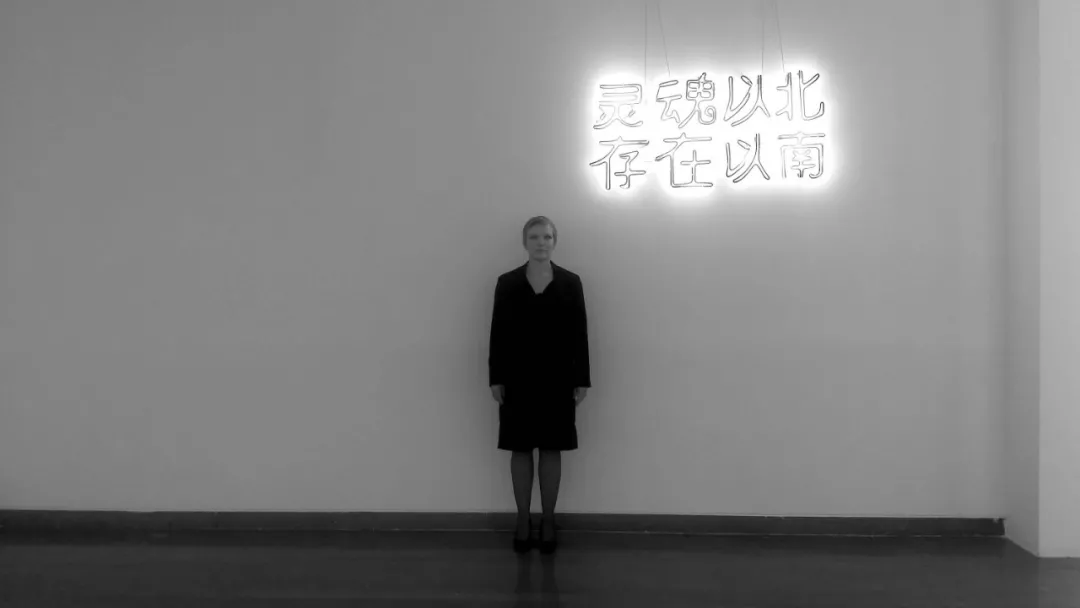
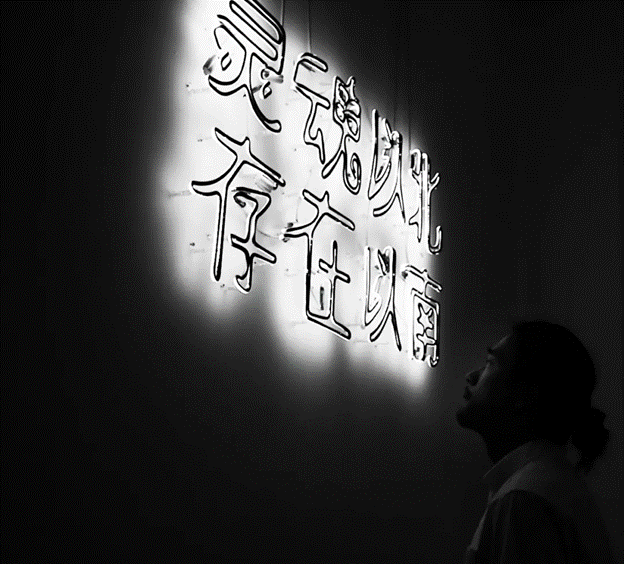
《灵魂以北,存在以南(North of My Soul South of My Existence)》,霓虹装置,深圳何香凝美术馆展览现场, 2019。一位不会说中文的艺术家所“写”的中国书法霓虹文字,是通过语言和诗意表达来致敬文化之间桥梁的作品。图片来源:Yi Shao
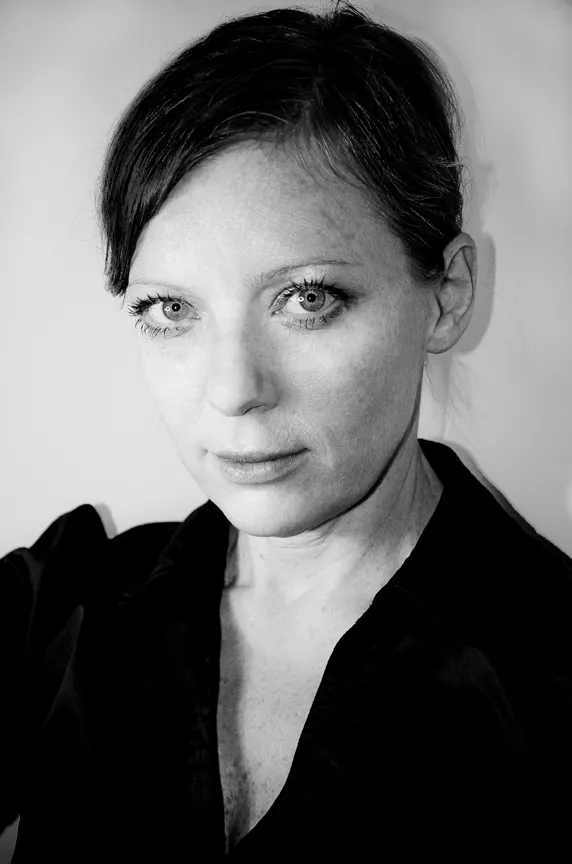
安妮·卡特琳·森斯塔 图片来源: Stefano Giovannini
祖籍挪威、生于新加坡、现居美国纽约,艺术家森斯塔的作品正如她的文化背景一般,多元而丰富。她的作品在装置艺术、摄影、霓虹灯雕塑、光学环境和大地艺术的多学科交叉点上。基于对空间、光、颜色和声音感官现象的关注,森斯塔经常在公共领域中创作有关于社会介入的作品。同时,她的文本作品充满诗意而富有批判性,指涉伦理、文学与哲学。
怡画廊(Y)
x
安妮·卡特琳·森斯塔 (A)
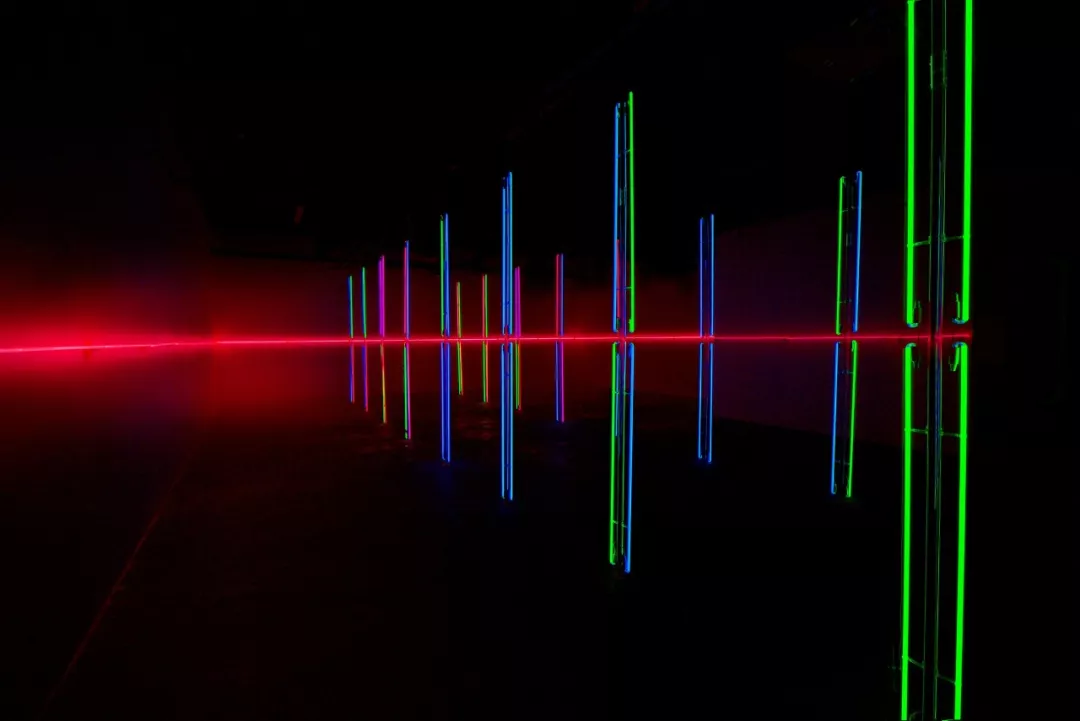
《元素 1 号(Elements I)》,霓虹沉浸式装置,2018,沙特阿拉伯AthrGallery,为展览 Through the Spectrum 的一部分,同展的艺术家有詹姆斯·特瑞尔(James Turrell) , 罗伯特·欧文(Robert Irwin)和卡洛斯·克鲁兹·迪兹(Carlos Cruz Diez)和里奥·维拉瑞尔(Leo Villareal) 图片来源:Athr Gallery
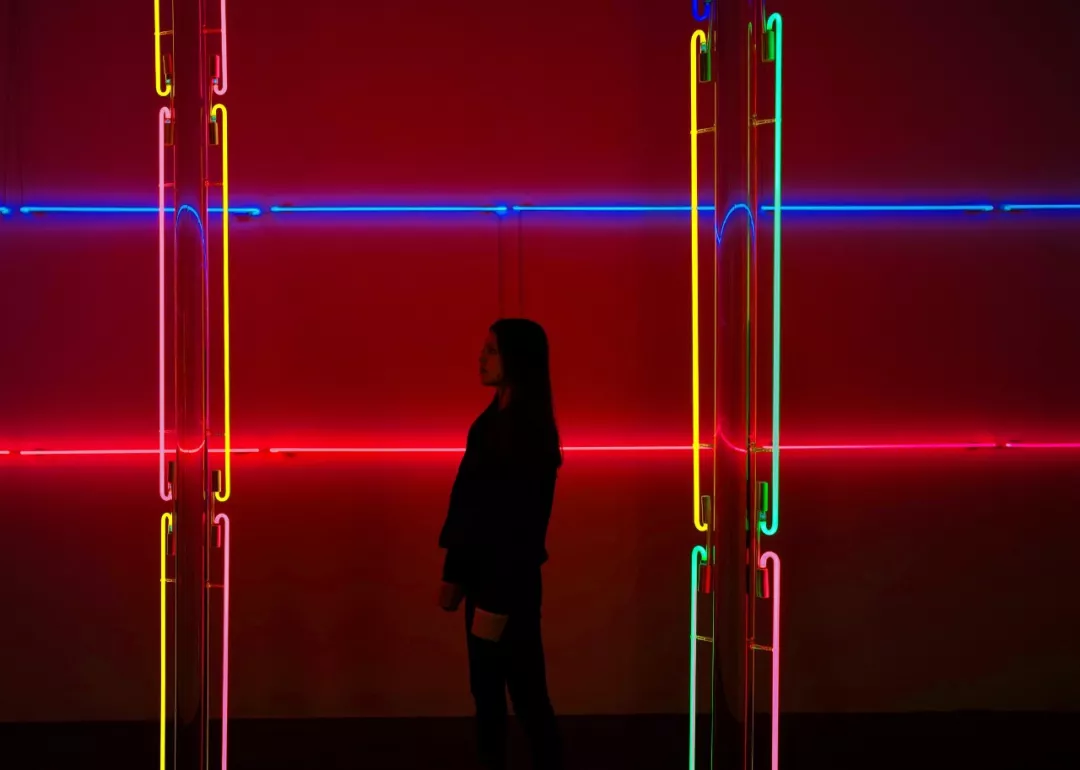
《元素 2 号(Elements II)》,霓虹沉浸式装置,2019,深圳何香凝美术馆大型艺术设计 “亚热带未有的景象——北欧四国(丹麦、芬兰、挪威、瑞典)设计展” 现场 。图片来源:Yi Shao和森斯塔工作室

《元素 3 号(Elements III)》,霓虹沉浸式装置,2019,纽约SL画廊森斯塔个展现场。图片来源:森斯塔工作室
Y: 你的沉浸式作品《元素(Elements)》系列,2018年从沙特阿拉伯巡回展览到深圳,今年已前往纽约。你是如何将作品与当地观众联系起来的?你从中学到了什么?
A: 看到这种沉浸式的装置有如此积极的反应,并且人们与作品互动和再叙述中产生反馈,这让我感到振奋并且受到鼓舞。观众富有参与其中的热情,我认为这定义了艺术语言的普遍性,特别是光、声音和空间上的艺术。这些装置把观众带到一个有即时反应的,极小的感知光和色彩的空间。这是一种冥想的但却是活跃的形式。这表明,我们的系统对来自光谱颜色的刺激是直接的,人们对它是开放的。光雕塑的构成是基于人们对空间的反应,包围视野的彩色视界可以让人们感受到某些特定的东西,而多色或单色的垂直柱则让观众感受到一种高度。它是一种感测光室的形式,是一个扩展的入口或转化通道,但它的组成在建筑结构上是可知的。我还发现一点很有趣:来自不同的文化背景的人对不同的颜色有不一样的反应。我在装置制作时非常注意这一方面。
Y: 你正在纽约怡画廊展示《迁徙之河(The River of Migration)》,这项作品是十年前你在加州一个大型户外装置的一部分。你回顾这件作品,并把它展示给纽约的公众,这对你来说意味着什么?
A: 我的社会和政治参与作品与诗学和叙事层交织在一起,这使之得以永恒。艺术家们通常很早就开始对那些“关键事件”做出反应,所以我想,经常参与社会活动的做法在被重新审视和重新适应环境方面相当长寿。社会问题和需要克服的深刻分歧是人类旅程中一个不断循环的过程,因此,一件作品在逐渐成熟的过程中被重新审视,可以使作品更加深入。当我2010年在加州的Life is Art基金会创作第一个版本的《迁徙之河(The River of Migration)》时,它是一个由太阳能电池板光结合大地艺术的装置。卡特里娜飓风后的时代出现了很多很强的社会评论和参与工作,一系列强有力的艺术家活跃起来,并介入到拉丁美洲政治活动中去。我发现他们很有趣。我的作品将“白立方”的画廊展览空间与社会介入的实地工作结合起来,旨在提高对我所关心的问题的认识。例如环境和农业问题、移民政策、宗教和女权主义问题、资本主义和伦理等。
今天,我们正处在一个极其紧迫和关键的时间线上,需要作为公民的我们投入所有注意力。然而从历史的角度看待这些事件,能够同时将需要立即解决的当代重大问题具体化,这一点很重要。悼念和纪念碑艺术的准则在于铭记我们逝去的受害者。同时和死亡对话,这是在以一种阴郁美丽的途径谈论我们的人性。在花时间去吸收、反思和重温艰难事件的过程中,我们有机会调整我们的道德规范和能力,以维持我认为我们现在急需的同理心。令人遗憾的是,在过去十年的大背景下,边境问题在新的、更为复杂的叙述下重新出现。这些叙述显示出其在企业资本主义、战争和环境危机的背景下,更暴力、残酷的特征。奴隶制/人类货品经济的时代似乎以新的形式和条件重生了。
在重新审视《迁徙之河(The River of Migration)》这件特定的作品时,它迫使人们根据当前的政治和对未来的叙述潜力重新将其语境化。但因为移民政治的多重问题和移民的本质,无论是出于何种根本目的和因素采取的迁移行动,都是一个无止境的问题。环境、自然灾害和饥荒相关的力量、战争和领土的吞并,各种造成移民发生的问题一直存在,所以这件作品本身是对与暴力有关的对无辜者的犯罪行为的评论,无论这种行为是来自政府或者犯罪组织,还是两者兼而有之。今天,与移徙有关的国家经济部分是基于难民的接收和分配制度,以及偷运和非法劳动方面。在斯堪的纳维亚(北欧)模式中,作为关于移民政策的一个积极的阐述,人们试图通过把难民视为社会的一种资产和资源,而不是一种负担和威胁,来为难民的社会同化创造新的解决办法。支持难民建立各种形式的创业,不仅是为了保持尊严的个性和维持一种支持系统,而且也将对他们的下一代产生积极的影响。
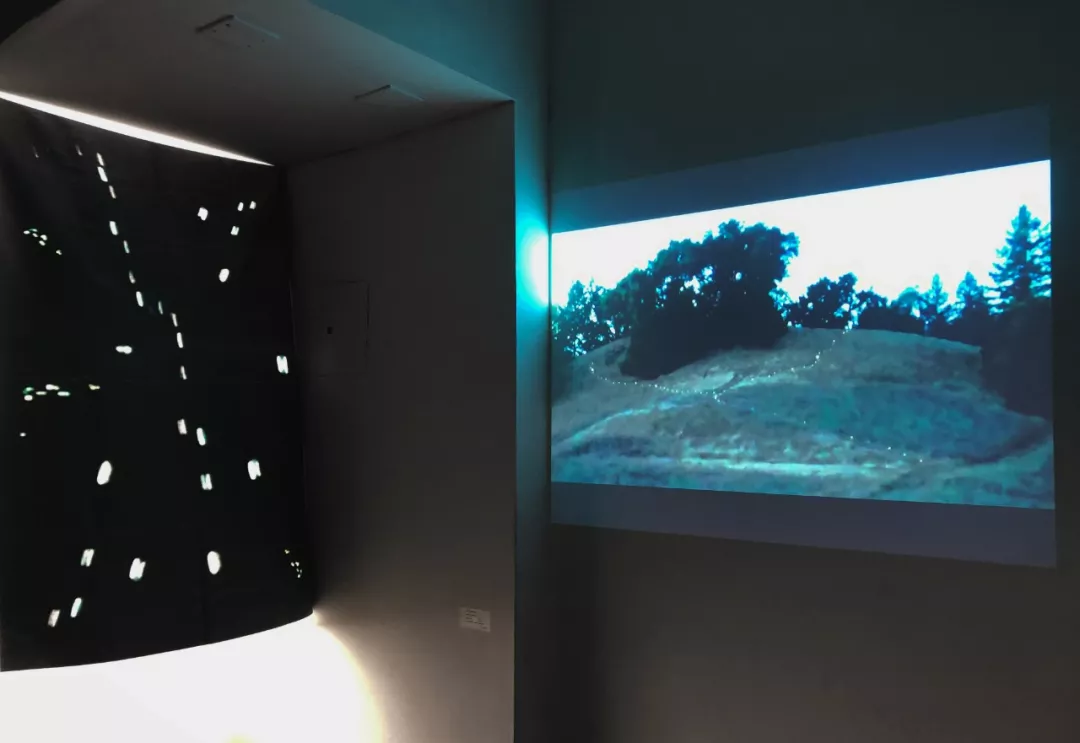
《迁徙之河(The River of Migration)》,2019, 怡画廊展览现场 。图片来源:怡画廊
Y: 你的艺术作品创作涉及广泛的范围,如装置艺术、摄影、录像、霓虹灯雕塑、光环境、大地艺术等,规模和形式的概念对你的实践意味着什么?
A: 规模和形式是非常重要的概念,我的作品占用空间,它们需要空间和时间。
Y: 你的实践包括许多不同的媒体,你总是打破非常相反的格式之间的障碍。然而,结果往往是流动的,有机的和沉浸式的体验。不同的格式和媒体在构思和创造过程中有什么不同?
A: 这些差异并不是很明显,也不是我工作的主旨。概念构思和产生的过程是相同的。我常在作品的最后使用过程的元素作为材料或概念的元素,作为自我参照。我认为这个过程的所有阶段都像气压计,沿着过程的测量时间轴,如果它们足够好的话,价值是相等的。我不使用无趣的元素。在这过程中可以被称为所谓差异的,可能是那些枯燥乏味的技术方面。
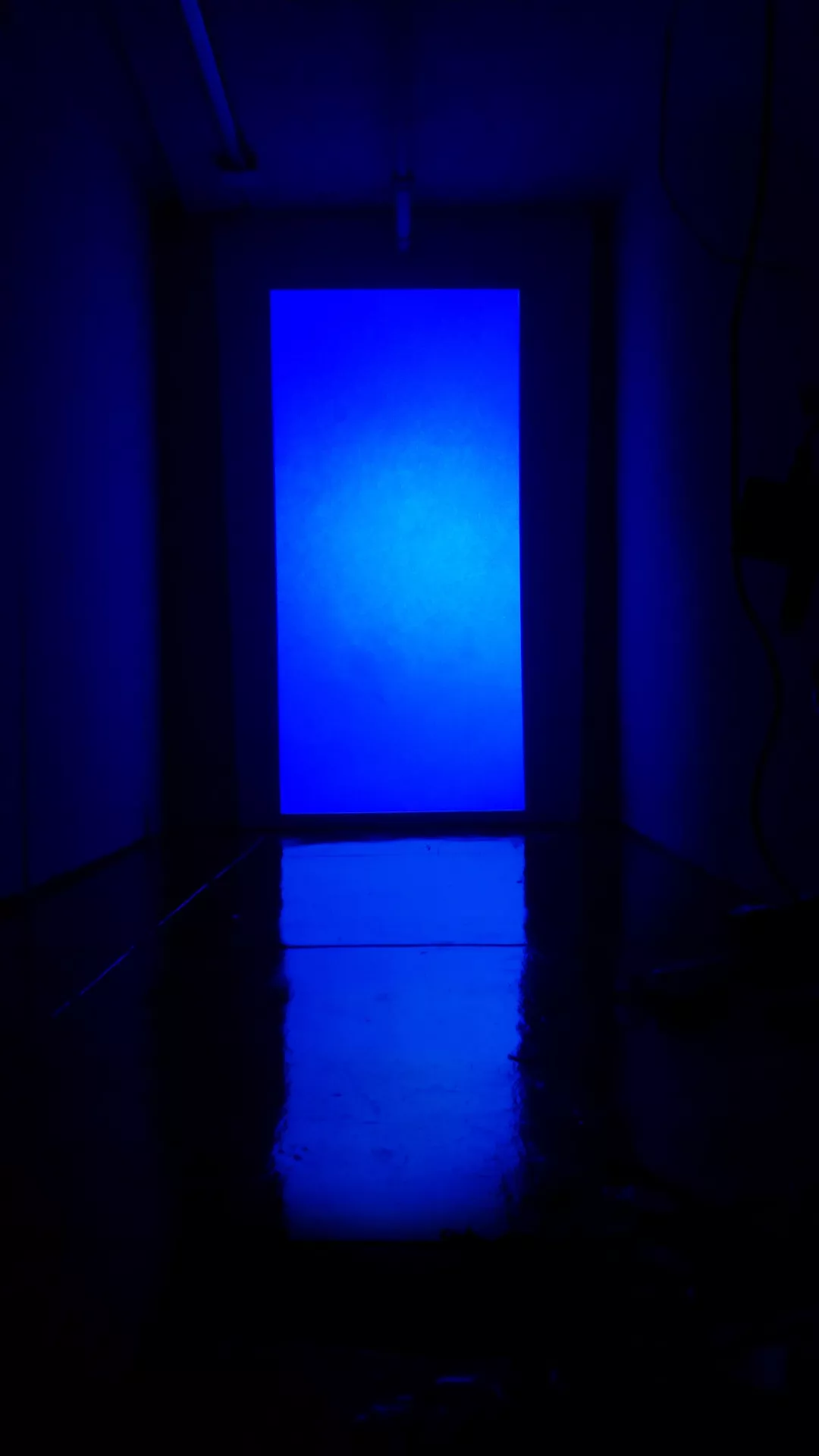
《Beckoned to Blue》,同名个展《Beckoned to Blue》的视频装置,2019, 19:22 min,音乐:作曲—C.C. Hennix(The Well tuned Marimba, 1978, 现场录制于斯德哥尔摩现代艺术博物馆,1987 –版权:Blank Forms Editions / Empty Editions) 图片来源:森斯塔工作室
Y: 你的作品中存在艺术史的反映吗?我读到你把丹·弗莱文(Dan Flavin)、詹姆斯·特瑞尔(James Turrell)和罗伯特·欧文(Robert Irwin)列为对你影响很大的人物。你能告诉我更多像他们这样的艺术家是如何影响你的实践的吗?
A: 是的,他们对我的早期创作影响很大,除此之外还有罗伯特·史密森(Robert Smithson)、迈克尔·海泽(Michael Heizer)和弗瑞德·桑德贝克(Fred Sandback)。我也受到了比如汉斯·哈克(Hans Haacke)、西格玛尔·波尔克(Sigmar Polke)、何里欧·奥迪塞卡(Helio Oiticica)这样的艺术家的影响。电影史和电影制作技术一直是影响我工作的重要因素。作为对任何人如何影响我或艺术中的任何人的回应,我认为在我的案例中,更多的是受到某些作品的启发或在他们的实践中感受到一种相似的精神,认识到我与他们本质的一致性。这几乎就像是一个深刻的熟悉和舒适的认知。Haacke、Polke和Oiticia等艺术家影响了我的“外向”作品、社会参与和表演项目、重要的诗歌作品,如《迁徙之河 (The River of Migration)》(2009)、《金子指引我(Gold Guides Me–Capitalism in the Public Realm》(2015)、《散居美国(Diaspora USA)》(2010)、《蔗糖迷宫(The Sugarcane Labyrinth)》(2009)、《棺材上的眼泪(Tears on a Coffin)》(2013)、《超越地域的时间(Time Beyond Place)》(2016-17)。在极简主义、光和空间艺术经典中,历史上久负盛名的艺术家都是各自领域的大师和先锋。他们是早期的感性艺术家。早期的大地艺术家离开了白立方画廊和城市去探索广阔的无国界开放空间,这也是时代的反映,探索空间和首次登月是集体意识的中心。今天,技术和人工智能,打破时空和物理的界限,以其极端的社会性及精神危机感影响着艺术家的创作和发展,也对我们人类如何在这一段时间内发挥作用提出问题。我对那些将自己植入未知领域、挑战陈规、敢于探索新方法和新思想的先驱艺术家有着深厚的亲切感,他们由内而外地具有原创性和发明意识。

《蔗糖迷宫(The Sugarcane Labyrinth)》, 地景作品, 2009, 与Life is Art基金会和皇家挪威驻休斯敦总领事馆合作,尺寸:5600m² x 4 mH 图片来源: 森斯塔工作室
Y: 在之前的采访中,你提到经常在公共领域创作基于哲学和诗歌的作品。你能谈谈哲学和诗歌是如何影响你的作品的吗?
A: 我觉得诗歌、哲学、文学和特定形式的音乐是最纯净和最高的灵魂表达形式,他们可以作为与各种世界之间沟通的桥梁。诗歌和文学以其崇高、精确和珍贵的形式,不仅浓缩和传播存在主义哲学的智慧,还拥有情感和智力的层次。正如博尔赫斯(Jorge-Luis Borges)认为宇宙是一个宏伟的图书馆,里面充满了人类所有的知识。当我想通过行动来表达一个观点,创作一篇陈述性的作品或一件纪念作品时,它是一种表达我的情感、情感和智力的语言。在创作作品的时候,我从一个意图或态度的一个方面开始,在大多数情况下,是对某件事的反应,然后我做了相当深入的研究。在研究过程中,我经常偶然发现新的信息,作者或特定的文本。如果它激励和启发到我,我会允许它影响我的主题。我在声明中主要关注的是其核心信息,但我真的相信机会法则,或者就像达达主义者和荒诞派的玩笑话一样,并允许它影响我的方向和制作过程。我没有受过哲学教育,但有人会说我有哲学倾向,我非常喜欢哲学,因此我也不把它太当回事。我把哲学当作照相机,或者把氖管弯成想要的形状的工具。通过使用一个特定哲学家的文本,句子的主题在某种程度上是对我的陈述的内容的引用。我会改变一些词语,重新造句,它可能对新的存在或新的语言产生更大的影响。所以这种对原文的转换也可以作为一种纯粹的载体来表达我想要说的内容,性质是不同的。
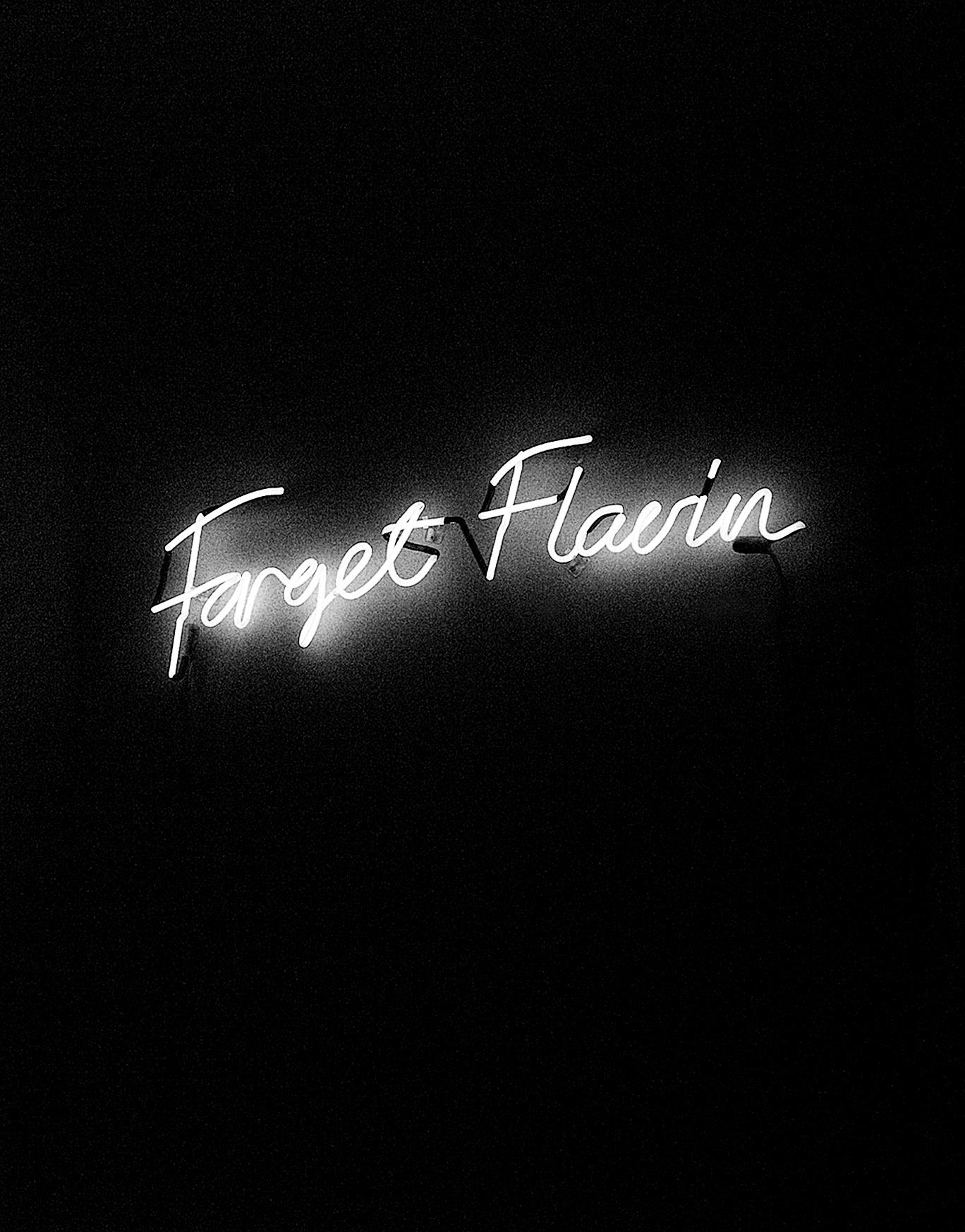
《忘掉弗莱文》,霓虹灯,2008。灵感源自鲍德里亚(Jean Baudrillard)的哲学评论著作《忘掉福柯》。 图片:森斯塔工作室
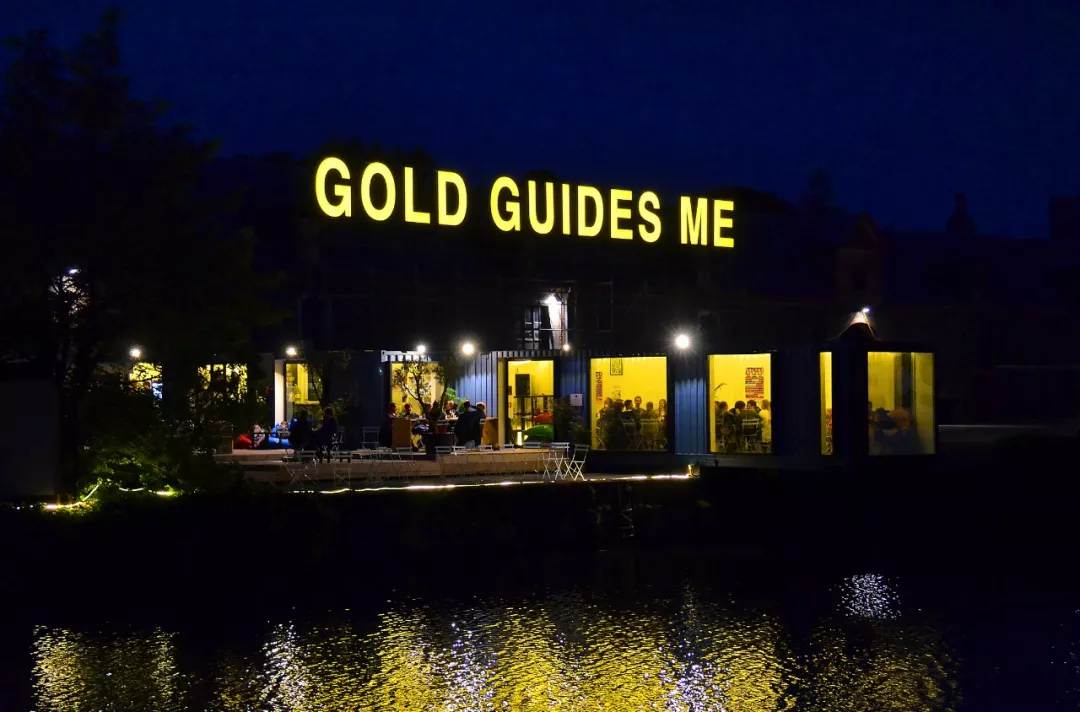
《金子指引我(Gold Guides Me)》, 2015,布鲁日艺术与建筑三年展(比利时),策展人:Lies Coppens, Till Holger Borchert和 Michel DeWilde,巨型LED装置,来自“公众领域的资本主义”系列。尺寸:28 米 x 2 米 x0.6 米. 图片来源:Sarah Bauens
森斯塔曾在第55届和第56届威尼斯双年展(意大利)、布鲁日艺术与建筑三年展(比利时)、Kunsthall 3,14(挪威)、Trafo Kunsthall(挪威)、奥克塔维亚艺术馆(美国)、原上海证大现代艺术馆(今喜马拉雅美术馆)(中国)、何香凝艺术馆(中国)等画廊、艺术博物馆和机构进行国际展览。她曾参加过许多影像和灯光艺术节,包括Rencontres Internationales(法国)、ISEA Dubai(阿联酋)、达拉斯Aurora(美国)。她参与过美国佛蒙特州Marble House和阿拉伯联合酋长国阿布扎比艺术中心(阿联酋)的艺术家驻留计划,是挪威艺术委员会、OCA(挪威)、FFF(挪威)、NBK(挪威)、FCA(美国)的众多艺术家奖助金的被授予者。森斯塔参与了包括Snøhetta建筑、Wolfe艺术中心和宾夕法尼亚大学工程建筑与TWBT建筑师(美国)在内的公共艺术组织。森斯塔在新加坡和挪威长大,如今在美国纽约和挪威奥斯陆两地生活和工作。她于1994年和1999年在纽约帕森斯设计学院学习,1989年在加州伯克利大学接受艺术教育。
文:倪安琪 & Weixin Jin
编译:倪安琪 & Cecilia Zhang Jalboukh
本文由怡画廊原创
如需转载,欢迎在公众号后台留言与我们联系
作品询价 | 商业合作,请联系:info@gallery-yi.com
了解更多艺术家信息,请访问怡画廊官网:
https://gallery-yi.com/pages/anne-katrine-senstad-artist-profile
Yi Gallery怡画廊成立于2018年,致力于推广当代艺术家,为多元化的创意人才提供自由的展示空间,媒介涵盖绘画、雕塑、互动媒体、诗歌、设计等。怡画廊定期举办艺术展览,策划公共项目,并组织品牌合作、品酒会、手工课和诗歌阅读等创意活动。
欢迎致函:info@gallery-yi.com
了解更多怡画廊的信息,请访问:gallery-yi.com
Instagram & Facebook: @yigalleryny
Senstad works in the multi-disciplinary intersections of installation art, photography, video, neon sculpture, light environments, and land art with a focus on the phenomena of perception, space and the sensorial realms of light, color and sound. She often creates works that are socially engaged as well as philosophical and poetic text based works in the public realm. Senstad has exhibited internationally at galleries, museums and institutions including the 55th and 56th Venice Biennale (IT), Bruges Art and Architecture Triennale (BE), Kunsthall 3,14 (NO), Trafo Kunsthall (NO), Octavia Art Gallery (USA), Zendai Moma (CN), He Xiangning Art Museum (CN). She has participated in numerous video and light art festivals including Rencontres Internationales (FR), ISEA Dubai (UAE), Dallas Aurora (USA). She is the recipient of artist residencies at Marble House, Vermont(USA) and Abu Dhabi Arthub (UAE), and numerous artist grants from Arts Council Norway, OCA (NO), FFF (NO), NBK (NO),FCA (USA). Public Art Commissions include Snøhetta Architects; Wolfe Center for the Arts and Penn University Engineering Building with TWBT Architects (USA). Anne Katrine Senstad was raised in Singapore and Norway, today she lives and works between New York and Oslo, Norway. She received her art education at Parsons School of Design and The New School for Social Research in New York 1994 and 1999, and Berkeley University, CA in 1989.
Yi Gallery (Y)
x
Anne Katrine Senstad (A)
Y: Your immersive "Elements" series, have travelled from Saudi Arabia to Shenzhen in 2018, now to New York this year. How did you engage your work with local audience and what did you learn from the experience?
A: It is very refreshing and inspiring to see that the immersive installation has such a positive impact and people respond by interacting and narrating the piece. I think this defines a universality in the language of art, and especially light, sound and spatially informed art, that the audience engages with such enthusiasm. The installations bring the audience into a minimal and sensorial light and color space where there are immediate reactions. It’s a form of meditation, but an active one. This shows that the stimulation of color spectrums on our system is immediate and people are open to it. The composition of the light sculpture is based on how we respond to space, we feel certain things with the horizontal enveloping color horizon, while the multi colored or monochromatic vertical columns invites the public to a sensation of elevation. It’s a form of sensorial light chamber and an expansive portal or transformational passage, yet architecturally informed in its composition. I also find it interesting how different cultures respond to different colors and am very mindful of that aspect when developing the installation.
Y: This is your first time exhibiting The River of Migration at Yi Gallery in New York City. The work was debuted as part of a large outdoor installation in California ten years ago. What does it mean to you to revisit this work and have it shown to the public in New York at this time?
A: My social and politically engaged work is interlaced with poetics and narrative layers, which makes it more timeless. Artists are often early in responding to critical events, so I think often socially engaged practices have a long life in terms of being revisited and re contextualized. Societal problems and deep rifts to overcome are an ongoing cycle in the human journey, so in maturing a work can bring it further depth when revisited. When I created the first version of The River of Migration in 2010 at Life is Art Foundation in California as a solar panel light and land art installation, there was quite a lot of very strong social commentary and engagement work going on due to the Post Katrina era, political constellations at the time and those crisis that brought as well as a strong set of Latin American politically engaged artists active who I found very interesting. My work interweaves between the white cube space and socially engaged field work aimed to raise awerness to issues I’m concerned with such as environmental and agricultural concerns, migratory policies, religious and feminist issues, capitalism and ethics, to mention a few. Today we are in an extremely charged and critical timeline that demand all our attention as citizens, yet its important to see these occurrences in perspective of history while being able to contextualize contemporary current grave issues that need to be addressed immediately. The canon of memorial and monument art honoring fallen victims and speaking to death, is somberly beautiful and talks about our humanity. In taking moments to absorb, reflect and revisit difficult occurrances we are given a chance to adjust our ethical compass and ability to sustain a level of compassion which I think is much needed now. In context of today and the past 10 years, the border issues have sadly resurfaced in new and more complex narratives displaying more violence, cruelty and in context of corporate capitalism, warfare and environmental crisises. The era of the slavery/human cargo economy seems to have been reborn in new forms and aliances. In revisiting the specific piece The River of Migration it forces one to re contextualize it in view of current politics and potentials of those future narratives, but it is also a timeless piece in that the multilayered issues of migratory policies and the very nature of migration for whichever originating underlying purposes and factors are at play for migratory action to take place. There has always been migration in one form or another, environmental, natural disaster and famine related forces, warfare and annexation of territories, so the piece itself is a comment on the atrocities associated with the violence caused by crime against the innocent, be it from government or organized crime or both. Governmental economy related to migration is today partially based on the reception and distribution system of refugees, as well as the industrious illegal sides of smuggling and transportation of humans. As a positive note on migration policies, in the Scandinavian model, they are attempting to create new solutions to societal assimilation of refugees by viewing refugees as an asset and a resource to society rather than a burden and a threat. To support refugees in establishing various forms of start up companies fex so to not only maintain a sense of dignified individuality and sustain a support system, but that they will have a positive effect on their next generations as well.
Y: You created a wider range of artworks, such as installation art, photography, video, neon sculpture, light environments, and land art, etc, What does the concept of scale and format mean to your practice?
A: Format and scale are very important notions, my works take up space, they demand space and they require time.
Y: Your practice encompasses many different media and you always break down the barriers between very opposite formats. However, the result is often fluid, organic and immersive experiential work. What are the differences in the process of conceiving and creating between different formats and media?
A:The differences aren’t really noticeable or dictate the work. The process of conception and production are the same. I often use elements of the process as material or elements of the conception in the final work, as in being self referential. I think all stages of the process are like barometers along a measurement timeline of process equal in value if they are good enough to keep. What is not interesting I don’t use. What could be described as specific differences in process are probably boring and nerdy technical aspects of production.
Y: What are some of the art historical reflections in your works? I have read that you listed Dan Flavin, and James Turrell and Robert Irwin as some of the greatest influence. Can you tell me more about how artists like them has impacted your practice?
A: Yes they were early influences, as well as Robert Smithson, Michael Heizer, Fred Sandback. I’ve also been influenced by artists such as Hans Haacke, Sigmar Polke and Helio Oiticica. The history of film and craft of filmmaking has always been a significant influence on my work as well. As a response to how anyone impacts me or anyone in art, I think in my case it lies more in being inspired by certain works or feeling a kindred spirit in their practice, recognizing an alignment with their essence. It's almost like a deep familiarity and comfort in recognition. Artists such as Haacke, Polke and Oiticica speak to my “extroverted” works, the socially engaged and performative projects, critical poetic works such as The River of Migration(2009), Gold Guides Me – Capitalism in the Public Realm (2015), Diaspora USA ( 2010), The Sugarcane Labyrinth (2009), Tears on a Coffin (2013), Time Beyond Place (2016-17). The historically well established artists in the canon of minimalism, light art and spatial art are all masters in their field as well as being pioneers. They were the early perceptual artists. The early land artists left the white cube gallery and the city to explore wide open spaces with no borders, but also a reflection of the times, exploration of space and the first landing on the moon was central to the collective consciousness. Today technology and Ai, breaking boundaries of space-time-matter and the extreme societal polarities with its spiritual crisis are influences on the development of art production for artists and how we as humans function in this chapter of time. I feel a deep affinity with the pioneering artists who insert themselves into uncharted territories, challenge the familiar and dare to explore new methodologies and ideas with a sense of discovery, authenticity and invention, both internally and in the physical realm.
Y: In your previous interviews, you mentioned that you often create philosophical and poetic text based works in the public realm. Could you talk about how philosophical and poetic text did influence your artworks?
A: I find that poetry, philosophic literature and specific forms of music are probably the purest and highest form of expression of the soul by acting as translator and bridge between the worlds. Poetry and literature in its elevated most precise and precious form manages to condense and transmit not only the wisdom of philosophy and existentialism, but with layers of emotion and intellect. As in Borges’ idea of the universe as a magnificent library filled with all human knowledge. in drawing on those realms when I want to convey a point through action, create a statement piece or a memorial work, it’s a language that speaks to my sensibilities, my sentiments and intellectual faculties. In creating works I start from an aspect of an intention or an attitude/frame of mind, a response to something, in most instances, and then I do quite thorough research. in the research process I often stumble upon new information, authors or specific texts that I allow to influence the theme if it excites and inspires me. I’m mostly focused on a central message in the statement but I do believe in the laws of chance, or as in the use of playfulness of the dadaists and absurists, and allow that to influence direction and inform the process. I’m not educated in philosophy but one could say I’m philosophically inclined and I enjoy it immensely, and therefore I also don’t take it too seriously and use it as a camera or as in bending neon tubes into a desired shape. By using a text reference from a specific philosopher where the theme of their sentence is referential in content in some capacity to my statement,I exchange words to re create the sentence or statement into a new sentence or slogan that might have an even stronger impact in its new existence or make a different point altogether so the nature of my transformation of the original text can also take form as purely a vehicle to state what I want to express.

【2019年5月15日,澳洲】近日,A... <详情>
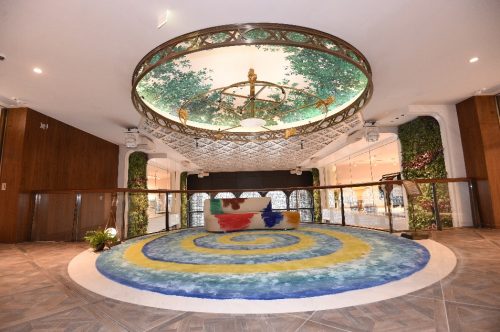
又是大学敞开校门迎接学子的丰... <详情>
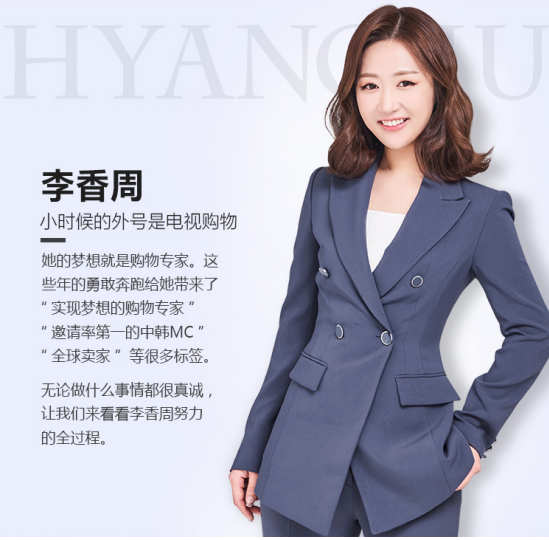
李香周,一位毕业于北京大学的韩... <详情>